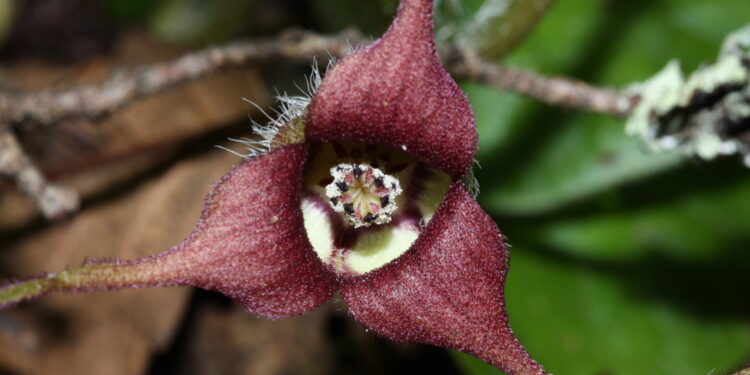Wild flower ginger plants have evolved to imitate the smell of carrion or dung. Credit: Walter Siegmund for Wikimedia Commons. commons.wikimedia.org/wiki/file:asarum_caudatum_1112.jpg
A wild ginger has an intelligent tip in its sleeve to attract pollinators. No, it is not a soft fragrance that fills the air, but the foul -smelling of rotten flesh and dung. To attract flies and beetles that love carri -nes, flowers of the plant genus asarum are brewing a smelly chemical called dimethyl disulfide (DMDS) using a synthase disulfide (DSS) – an enzyme derived from another enzyme, methanethiol oxidase (MTOX), found in animals and plants.
A study carried out by researchers from Japan discovered that some adjustments in a gene mainly responsible for the detoxifying smelly compounds have evolved independently in three different plant lines to produce unpleasant odors.
The same three amino acid changes, found in all advanced DSS enzymes independently, allowed the transition of MTOX activity to DSS activity, according to research published in Science.
A few organisms are able to thrive in the ecological niches to which others cannot access. Their desire to survive is powered by an adaptive radiation, where species are diversifying by changing a set of specialized or improved metabolic features. Understanding how these new features arise, their evolution over time and what limits their development is a key area of interest in various fields of modern biology.
Natural selection often promotes the repeated evolution of beneficial features, thus opening up to scientists to study changes using phylogenetic comparative methods – statistical techniques that are used to analyze the history of organizational evolution and diversification.
Caricature of floral mimicry of carrion and dung made with oligosulfures. Credit: Science (2025). Doi: 10.1126 / Science.adu8988
An interesting feature to study is the ability of angiosperms or flower plants to imitate the appearance and smell of carrion or dung to attract pollinators, a strategy that has emerged independently in several plant lines.
Previous studies have shown that floral oligosulfides, strong sulfur compounds with foul smell, come from the bacterial degradation of amino acids containing sulfur such as cysteine and methionine. Although their role in attracting pollinators is well documented, we do not know much about the genetic and physiological mechanisms which allow flowers to emit these volatile compounds.
To discover the evolutionary pathways and the genetic changes that facilitate this behavior, the researchers focused on Asarum, a group of plants that have acquired the line to produce malodors on a relatively short evolutionary scale of less than 7 million years.
Parallel acquisition of the Synthase disulfide activity (DSS) in the SBP family through flowering plants. Credit: Science (2025). Doi: 10.1126 / Science.adu8988
The researchers analyzed the volatile compounds produced by 53 species of Asarum and eight varieties. To identify whether or not DMD oligosulfides come from amino acid l-methionine, feeding experiences marked by isotopes have been carried out where flowers received l-methionine marked with carbon-13.
They found that the DMD and the Dimethyle Trisulfure (DMT) had produced contained the carbon-13 label, confirming l-methionine as a source.
The researchers identified three major classes of selenium bonding protein genes (SBP) in Asarum.
By expressing these genes in E. coli, they found that a class, SBP1, code for enzymes that convert methanethiol into DMD. A correlation between the amount of DMD emitted by flowers and levels of expression of SBPs has also been reported.
The study suggests that the generalized occurrence of DMD emission in floral facial expressions can be due to the ease with which a highly preserved enzyme can be reused by some changes in amino acids.
More information:
Yudai Okuyama, convergent acquisition of disulfide formation enzymes in smelly flowers, Science (2025). DOI: 10.1126 / Science.adu8988. www.science.org/doi/10.1126/Science.adu898888
Lorenzo Caputi, bad breath flowers, Science (2025). DOI: 10.1126 / Science.ADX4375. www.science.org/doi/10.1126/science.adx4375
© 2025 Science X Network
Quote: Genes mutations help flowers imitating foul smells to attract carcass amateur pollinators (2025, May 12) recovered on May 13, 2025 from
This document is subject to copyright. In addition to any fair program for private or research purposes, no part can be reproduced without written authorization. The content is provided only for information purposes.



